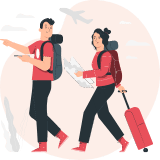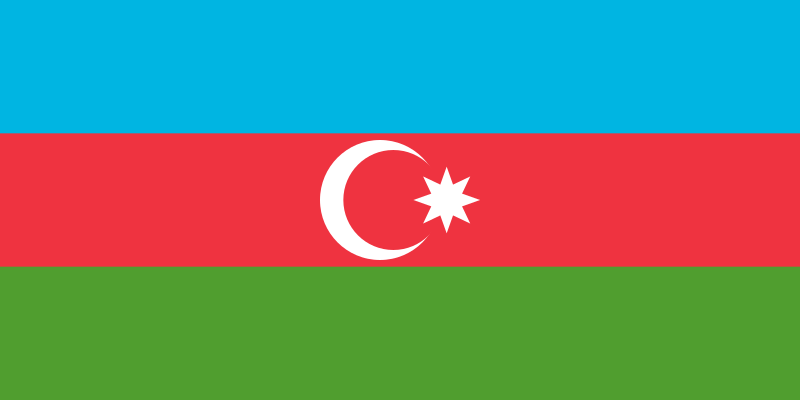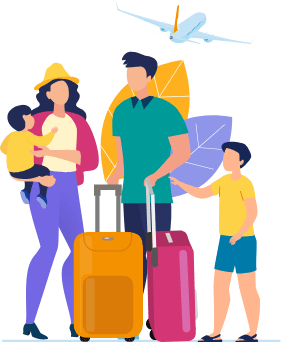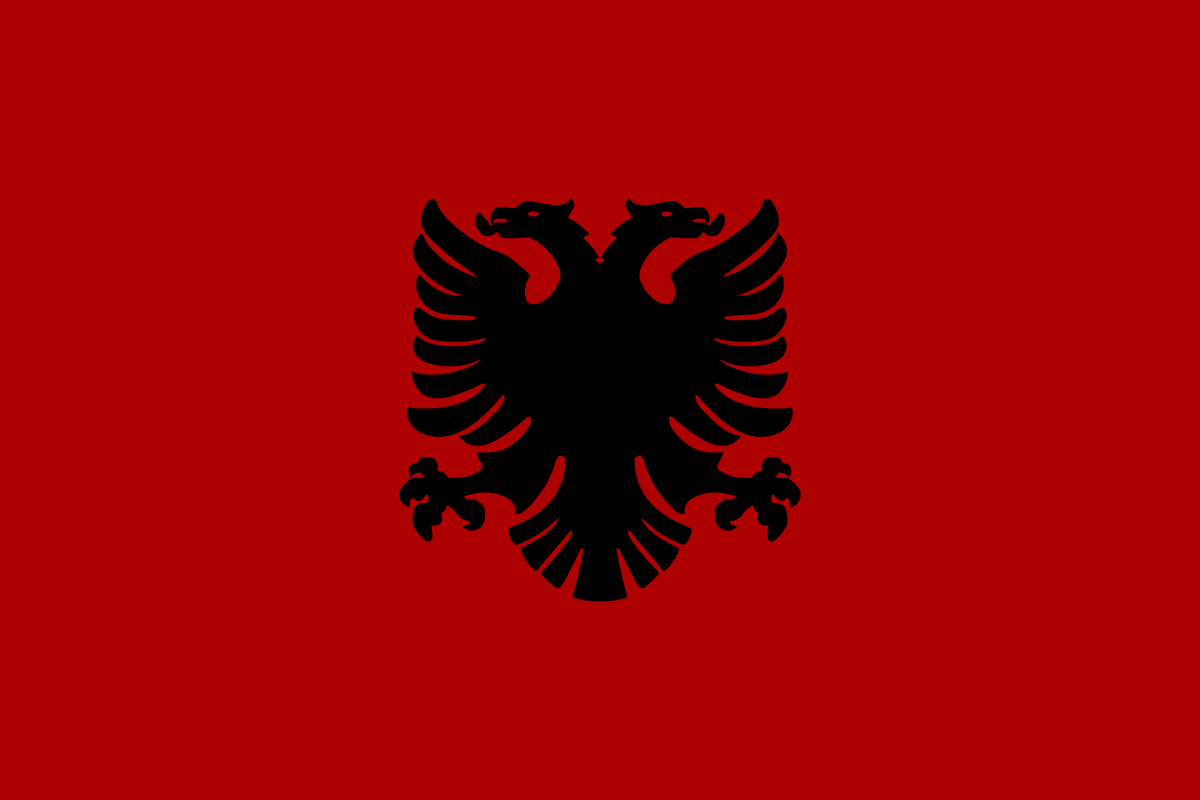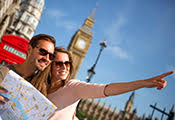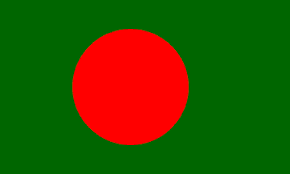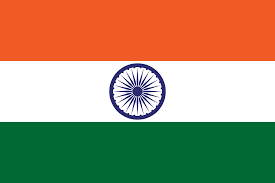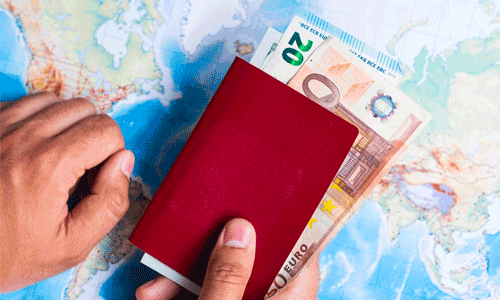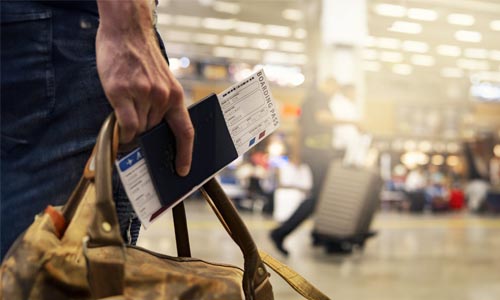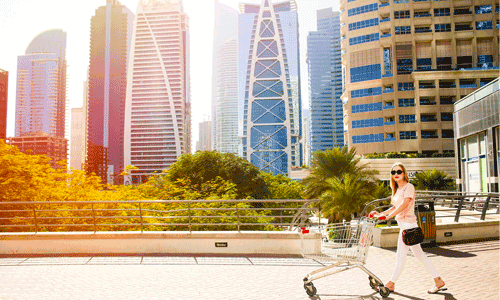Travel Insurance for Nepal from UAE
Nepal, a land-locked country with India to its east, south and west, and, China on its north, is known as the “roof of the world”. A country with three distinct geographies of the Himalayan region, which includes the mighty Mount Everest peaking at 8848 metres, its mid-hill regions and the plains of Kechana Kalan in Jhapa as its Tarai region, has diversities that intrigue the traveller. The diverse topography apart, a journey to Nepal is a heady mixture of snowy landscapes, ancient traditions of Nepal and a vibrant culture that embraces the old and the new.
Best time to visit Nepal
Strictly speaking, there is no seasonal constraint in travelling to Nepal. The severest winter months of December and January, despite the cold, offer brilliant views amidst bright sunshine. For trekkers, spring and autumn are the recommended times for trekking.
Benefits of Having Travel Insurance for Nepal
It is compulsory for all trekkers to Nepal to have valid travel insurance that covers treatment of medical emergencies including COVID 19 and medical repatriation service for return to home country under medical exigencies. Additionally, if you are on a trekking visit, coverage against trekking accidents is always advisable. Ideally, for all travellers, a comprehensive travel insurance policy is the best option. Such a policy covers several benefits like loss due to delays in transportation, loss or damage to baggage, trip cancellations and host of other benefits. Let’s glance through the primary benefits and coverage of a comprehensive Nepal travel insurance policy including trekking.
-
Journey Related Coverage
- Flight delay: Travel insurance company for your Nepal comprehensive coverage should cover you for the essential purchases that you need to make through the period of wait over a delayed flight.
- Hijack distress allowance: A good comprehensive travel policy would compensate you for the distress caused to you in the event of your flight coming under a hijack.
- Emergency financial assistance: In the circumstance of a robbery or theft, your insurance will provide you with emergency cash.
- Extended hotel accommodation: Should you need to stay on due to a medical situation, a comprehensive travel insurance policy will take care of your extended hotel accommodation.
- Automatic policy extension for 7 days: Under conditions like a medical or accidental contingency leading to an extension of your stay, automatic policy extension for 7 days can help in your Nepal travel insurance.
- Personal liability: In case of any personal liability arising out of an accidental damage to a third party, the claim on you will get compensated by your insurance.
- Trip cancellation: In the event of your travel getting cancelled, you are covered against loss in travel and accommodation bookings.
- Loss of passport: If your passport is stolen or lost, the cost for obtaining a new one from the UAE embassy in Nepal is compensated under your comprehensive travel insurance policy, Nepal.
-
Baggage related coverage
- Delayed baggage: If your baggage suffers delay in arrival, your travel insurance is required to cover you for essential purchases.
- Lost baggage: A predetermined fixed compensation is provided under travel insurance for baggage lost in transit.
-
Medical coverage
- Emergency medical expenses: You need to check that a cashless treatment facility in the event of a medical emergency is included in your travel insurance policy for Nepal.
- Hospital daily cash allowance: Although a comprehensive travel policy covers medical expenses, a daily hospital cash allowance reimburses petty and little expenses that come with any hospitalisation.
- COVID 19 coverage: Your travel insurance for Nepal needs to include coverage for COVID 19. This would include cover for the mandatory quarantine period of 14 days, RT-PCR test costs and the medicines necessary for treatment of COVID.
- Medical evacuation: Emergency medical evacuation by air or suitable surface transport to the nearest hospital ensures some relief from distress associated with the sudden medical condition.
- Emergency dental expenses: Coverage for emergency dental treatment ensures that your smile is retained through your trip.
- Accidental death: In case of death, whether by accident or due medical conditions, your travel insurance will provide a lump-sum compensation to your family.
- Medical & Body Repatriation: In case of severe sickness or death, your travel insurance covers the cost for transfer of the mortal remains or the sick patient to the home country.
In summary, coverage under a comprehensive travel insurance in Nepal is a shield for visitors from several unforeseen expenses in Nepal.
There are different types of policies available for international travel to Nepal. These are-
Single trip travel insurance: Single trip travel insurance that covers only one trip to Nepal for the specified duration. The policy takes effect from the moment your trip starts, and ends as you end your journey. This policy may be bought under the following plans:
Family travel insurance: Family travel insurance where all members of your family travelling together are named and covered under a single policy for the trip.
Individual travel insurance: Individual travel insurance when you travel alone as an individual to Nepal
Senior citizen travel insurance: Senior citizen travel insurance specially designed for senior citizens especially above 65 years.
Annual multi-trip travel insurance: Annual multi-trip travel insurance Nepal that covers multiple trips that you may make to Nepal in a calendar year. This is an ideal insurance for those travelling to Nepal thrice or more in a year. It suits well for business travellers too.
International travel insurance: International travel insurance that covers all countries across the globe that you may travel to. Nepal is of course included.
Student travel insurance: Student travel insurance plans are also available, usually within the ages of 16 to 35 years, for those visiting Nepal for educational purposes. Usually student plans will also cover sponsorship and interruptions in study.

Getting travel insurance Nepal online
You may get your travel insurance online from the website of most of the insurance companies. Fill in details of your travel and seek information about your dates, etc. Once done, you will mostly be required to give out your contact details and insurance personnel will call you back. This will provide you with the opportunity to lay down all your specific insurance cover requirements for Nepal and get a quote from the company. You may also compare rates of different companies at policybazar.ae. You will be able to get a fair idea about the comparative advantages and disadvantages vis-à-vis your travel insurance needs. This will enable you to make an informed decision and get suitable travel insurance for Nepal.
Visa requirements for Nepal
A visa for Nepal may be taken on arrival or prior to your journey.
Visa prior to journey:
The Nepalese consular office in the UAE, for issuing visas for Nepal, is located in Abu Dhabi.
Travellers are first required to submit an online application through the immigration portal and carry a print-out of the online visa application form generated after submission to the embassy in person or authorise someone to submit the application and collect the visa on his behalf. The timings for the office are 9:30 am to 1.30 pm for submission of visa applications and 2:30 to 4 pm for visa collection, Sunday through Thursday. Compliant applications received up to 1.30 pm are issued visa on the same day. The Nepal visa fees vary from AED 110 for a 15 day visa to AED 460 for a 90 day visa with the 30 day visa fee as AED 190. This is payable in cash at the Nepal visa office while physically submitting the copy of the online application. All Nepal visas are multiple entry during their periods of validity.
The following documents are required to complete your submission of the visa application:
- Print-out of your online application post submission
- Your passport and a photocopy thereof. The passport must have a minimum validity of six months remaining, and, at least two blank pages available for visa and stamping.
- Copy of your Emirates I/D
- Any other document that you may feel supports your application
- Visa fee in cash
Visa on arrival:
Should you decide to take your visa on arrival, be prepared to spend some time at the airport.
- Fill in the arrival card prior to landing,
- An “on arrival” visa requires you to submit an online Tourist Visa form on the website of the Department of Immigration. This application is valid for 15 days and may be done prior to your journey. Print and bring your submission receipt (it has a barcode). This form may also be filled at one of the kiosks on arrival at the Tribhuvan International Airport.
- In the next step, pay the requisite visa fees at the visa fee collection counter (you may do this online in case you have applied through the immigration website) based on your visa period (15/30/90 days) and collect the receipt. At the airport, the visa fees are payable in USD in several forms, but it is advisable that you keep cash handy. The fees at the airport are USD 30, USD 50 and USD 125 for 15 days, 30 days and 90 days, respectively.
- With your online form, payment receipts and passport in hand, present yourself at the immigration counter at the airport.
- Your immigration officer will process your visa upon receipt of your documents at the counter
- Your visa is issued once your officer is satisfied with your documents.
Trekking and some other activities and visits require separate permits. Change of visa status, i.e. default tourist visa to any other may also be done at the immigration office nearest to your location in Nepal.
Places of tourist interest in Nepal
Nepal is a land of discovery and uniqueness. It is also a country rich in ancient cultures amidst dramatic scenery. Nepal boasts of steamy jungles and mesmerising plains of the Terai in the backdrop of the icy peaks of the world’s highest mountains. This sheer natural diversity is the landmark of Nepal. Nepal is one of the last places on earth that is host to the Asiatic rhinoceros and the Royal Bengal Tiger.
Here are some of the locations that exemplify Nepal.
Kathmandu:
Kathmandu is the capital of Nepal. This place is unique in its amalgamation of modern and traditional cultures. Go on a day trip to Patan, a suburb, for the joy of shopping. You can also plan a trip to Pokhra for viewing its heavenly sights comprising gardens, mountains, and water lakes.
Sarangkot:
This small village, with its own natural beauty, lies in the outskirts of the Pokhara city. You get the rare opportunity to view the Annapurna Himalayan range amidst orange hues, one of the most beautiful mountain views that has few parallels.
Phewa Lake:
This “must visit” also in Pokhra, is stated to be the second largest lake in Nepal. This is the place to enjoy some of the best boating rides. The Phewa Lake is also yours to enjoy some quiet moments relaxing through the late afternoon as you see some beautiful fishes in their lassitude through the clear lake waters. The water is so clear you marvel at the mirror reflections of Mount Machhapuchhre and the Annapurna range floating in its serenity.
Mahendra Cave:
Situated off Pokhra, the cave named after Mahendra Bir Bikram Shah Dev hosts multitudes of stalactites and stalagmites. The cave also hosts the statue of the deity Lord Shiva and attracts visitors in multitudes every year.
Devi's Fall:
Perhaps the most famous tourist spot in Pokhara, Nepal, it is quite difficult to reach. The sound of the water as it eventually strikes as a fall is distinctively heard. This is the most amazing thing about this fall. The starting point of this fall is where the Pardi Khola stream dips into and eventually vanishes into the underground. You do not see the water source as it suddenly appears and hits into the cave. It is indeed a wonder to behold.
Bindyabasini Temple:
The Pokhra valley continues to be the citadel of many of the stand-out places to visit in Nepal. Perched atop at height of 3000 ft. above sea level, this is one of the oldest temples in Pokhara valley and stands out in its own beauty as one of the most attractive tourist spots in Nepal.
Lumbini:
Hailed as the birthplace of Gautam Buddha, it is one of the most serene places in Nepal with its Hindu temples, stupas, and gardens. Enjoy your moments amidst peace and tranquillity.
Bhaktapur:
A medieval city of red brick houses and temples, it is also one of the most popular tourist places. Artisans sewing clothes on the roadsides, several museums with vintage goods magnify the old world charm that makes Bhaktapur a valuable tourist attraction in Nepal.
Nature and forests:
Forest lovers will seldom miss a trip to spot wildlife on the Chitwan Safari. Nepal has several national parks like the Langtang National park, the Chitwan National Park, and the Sagarmatha National park. Jungle cats, sloth bears, horned rhinos and other species are often spotted on the edge of the plains in Nepal.
The Yeshe Institute:
This part of Nepal is home to the students of Kathmandu University and Buddhist enthusiasts across the world for Buddhism and religious studies.
The Pashupatinath temple:
A world heritage site, it embodies the traditional culture in Nepal. The Swayambunath Stupa, Boudhanath Stupa, and Patan Durbar Square epitomise the history and embody the ancient and traditional culture and atmosphere that is the soul of Nepal.
Travel Insurance for Nepal FAQs
You are required to fill out a Visa Application Form available on the Nepal Embassy’s website or collect the form from the front desk of the embassy. Submit your filled in application, either online or on paper, with your original passport and a copy, your Emirates I/D, one recent passport size photograph. You may be required to submit a recommendation letter from your employer (if applicable) mentioning, inter alia, your job designation, monthly salary and why you want to visit Nepal.
The peak season for tourism in Nepal is from March to May and September to November. Nepal remains crowded almost all the time during these peak tourist seasons. If you want to enjoy Nepal at its best amidst a quiet and peaceful atmosphere, a trip in the winter, between December and February or between in summer-monsoon period, i.e. June to August is best.
A 5 to 7 day trip is good enough for your visit restricted to just two regions- Kathmandu and Pokhara and all sites thereabouts. For a trek in the Himalayas, you require at least 10 days for an experience of the real thrills of trekking.
The currency of Nepal is Nepalese Rupee (NPR). Money exchange may be done at the airport or at your hotel. It is preferable that you change currency at an ATM instead. There are several ATMs in cities, like Pokhara, Kathmandu and other major cities, but options are less as you enter rural Nepal. It is advisable to keep cash handy at all times in the event of an emergency.
A travel insurance for Nepal that covers emergency medical treatment including COVID-19 and medical repatriation (a service to return a traveller to their home country for health reasons) is mandatory for travellers to Nepal.
Other Insurance Products
Car Insurance Dubai | Car Insurance UAE Price | Health Insurance Dubai | Best health Insurance in UAE | Maternity Health Insurance | Health Insurance Cost | Term insurance Dubai | Life insurance UAE | Term insurance For NRI | Best Monthly investment Plan UAE | Top Mutual Funds UAE | Child Education Plan UAE | Group Health Insurance | How to Check Insurance Status Online

More From Travel Insurance
- Recent Articles
- Popular Articles








